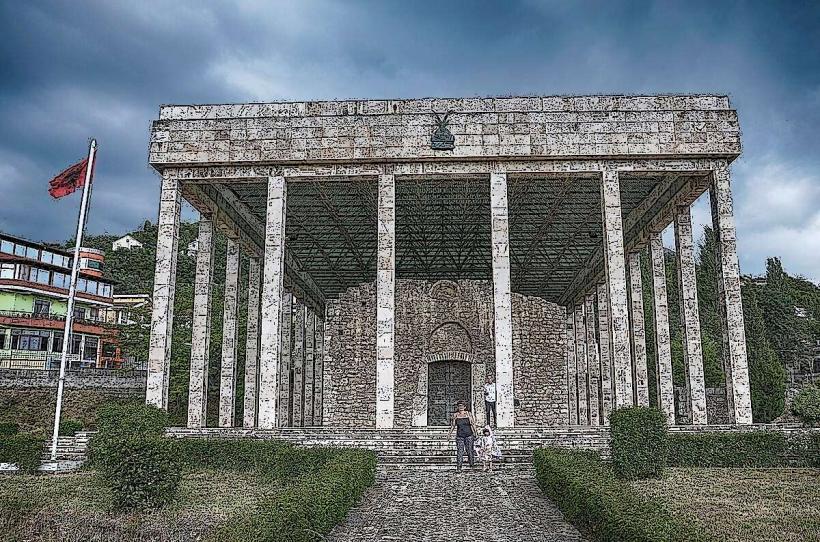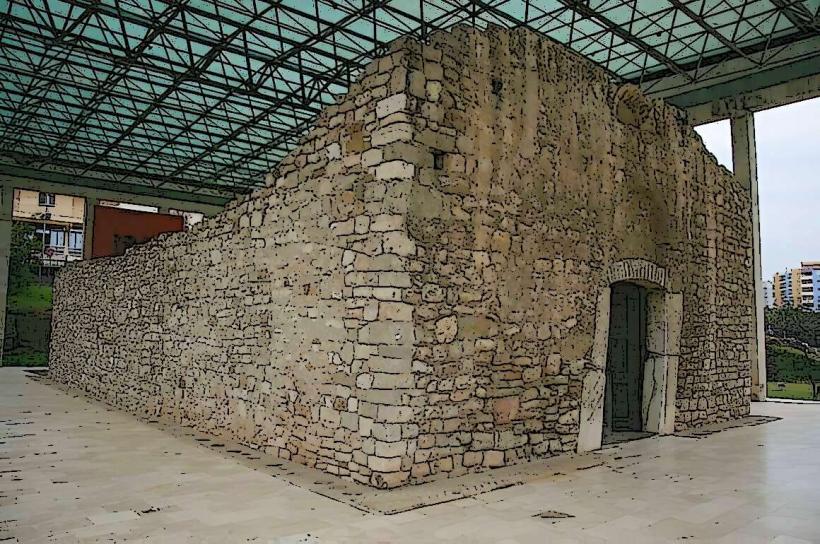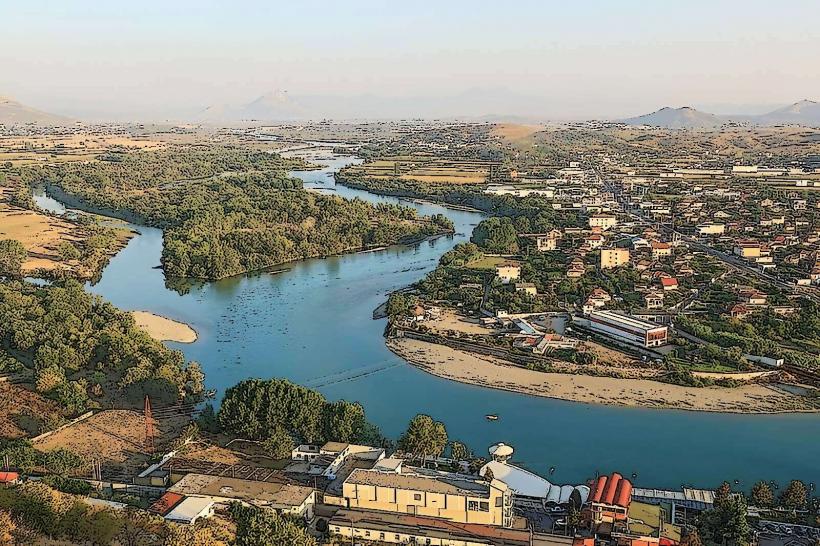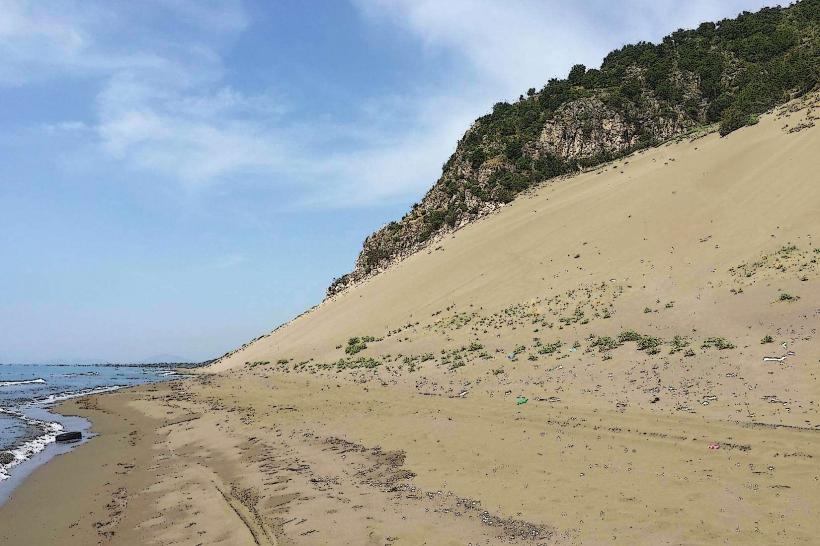Information
Landmark: Lezhë CastleCity: Lezhe
Country: Albania
Continent: Europe
Lezhë Castle (Kalaja e Lezhës)
Lezhë Castle, also known as Kalaja e Lezhës, is a historic fortress located in the town of Lezhë, in northwestern Albania, overlooking the Buna River. The castle is of great historical and cultural significance, particularly due to its association with the Albanian national hero Skanderbeg, who played a crucial role in the resistance against the Ottoman Empire. Today, Lezhë Castle is an important landmark and tourist attraction, offering stunning views and insights into Albania’s rich history.
Key Features of Lezhë Castle
Location and Scenic View:
- Lezhë Castle is perched on a hilltop, offering panoramic views of the surrounding countryside, including the Buna River, Lezhë town, and the surrounding plains. Its strategic location made it a vital military stronghold during various historical periods.
- The site is easily accessible from Lezhë town and is a short drive from the Adriatic coast.
Historical Significance:
- The castle has a long and complex history, dating back to the Illyrian and Roman periods, though much of what stands today was built during the Middle Ages.
- The castle played a key role in the wars against the Ottoman Empire, particularly during the 15th century, when Gjergj Kastrioti, known as Skanderbeg, made it his base of operations in his fight to defend Albanian territories from Ottoman invasion.
- Skanderbeg convened the League of Lezhë here in 1444, a significant event in Albanian history. The League of Lezhë united various Albanian princes and nobles in their struggle for independence from the Ottomans, cementing the castle’s importance in the nation’s resistance.
Architecture and Structure:
- The castle itself features a combination of Roman, Byzantine, and Ottoman architectural elements. It is a fortified complex with walls that have been constructed, rebuilt, and expanded over several centuries.
- The main fortress walls are built from stone, and the structure has towers and gates designed for defense. While much of the castle remains in ruins, some sections of the wall and the watchtower are still in relatively good condition.
- A large fortification wall surrounds the site, and remnants of old bastions and defensive structures are still visible. Visitors can walk along parts of the wall and imagine how the castle would have looked during its peak.
Skanderbeg’s Mausoleum:
- A key feature of the Lezhë Castle is the Mausoleum of Skanderbeg, where the national hero’s remains were reportedly buried after his death in 1468. The mausoleum is a simple, yet deeply symbolic, structure within the castle complex.
- The Mausoleum of Skanderbeg is located within a small church inside the castle, which has become a place of homage and pilgrimage for Albanians and visitors who wish to honor Skanderbeg’s legacy.
- Skanderbeg’s remains were later moved to St. Nicholas Cathedral in Tirana, but the site remains a symbolic center of Albanian nationalism and pride.
Cultural and Touristic Significance
Cultural Heritage:
- Lezhë Castle is an important symbol of Albanian resistance against foreign domination, particularly the Ottoman Empire, and it is closely tied to the legacy of Skanderbeg.
- The site holds a significant place in Albanian national consciousness and has been a focal point for historical studies and cultural celebrations, especially during national holidays.
Tourism:
- Today, Lezhë Castle is a popular tourist destination. It offers visitors a chance to learn about Albanian history while exploring a well-preserved fortress with breathtaking views.
- The castle is a great spot for history enthusiasts, photographers, and those interested in exploring Albania’s medieval past. Visitors can enjoy a walk around the grounds, visit the mausoleum, and learn about the history of the castle and Skanderbeg’s role in the region’s defense.
- The site is also home to a small museum that exhibits historical artifacts and information about the castle’s significance, especially during the medieval period and the era of Skanderbeg.
Events and Festivals:
- The castle is sometimes used for local events, including historical reenactments, cultural performances, and commemorative ceremonies related to Skanderbeg and the League of Lezhë.
- The annual Skanderbeg Festival is one of the major events held in the town of Lezhë, celebrating the life and achievements of Albania’s national hero.
Nearby Attractions
Lezhë Town:
- The town of Lezhë itself is a pleasant place to visit, with a rich history and a mix of Ottoman and modern influences. It is home to several important landmarks, including the St. Nicholas Cathedral and the Lezhë Archaeological Museum, which displays artifacts from the ancient Illyrian and Roman periods.
- Lezhë is also a short drive from the Adriatic Coast, where visitors can enjoy beaches and coastal attractions.
The Buna River:
- The nearby Buna River is a beautiful natural area that offers opportunities for boat trips, birdwatching, and nature walks. The river is part of the Shkodra River system, which is known for its biodiversity and scenic beauty.
Shkodra:
- Lezhë is close to Shkodra, one of Albania’s oldest and most historically significant cities. Shkodra is home to attractions such as Rozafa Castle, Shkodra Lake, and several museums that reflect the region's rich history.
Best Time to Visit Lezhë Castle
- The spring and summer months (April to September) are the best times to visit Lezhë Castle, as the weather is mild and perfect for exploring the outdoors.
- The autumn months (October) also provide a great opportunity to visit, as the cooler weather is ideal for hiking, and the surrounding landscape is often beautifully adorned with fall colors.
Conclusion
Lezhë Castle is an iconic landmark in Albanian history, offering visitors a glimpse into the nation’s rich cultural and military past. The connection to Skanderbeg and the League of Lezhë makes it an important symbol of Albanian independence and resilience. Whether you're interested in history, architecture, or natural beauty, the castle provides a unique experience with stunning views and a deep sense of national pride.





